Back to the Future at NCAAs: Bring Back the W4x+
Ed Hewitt
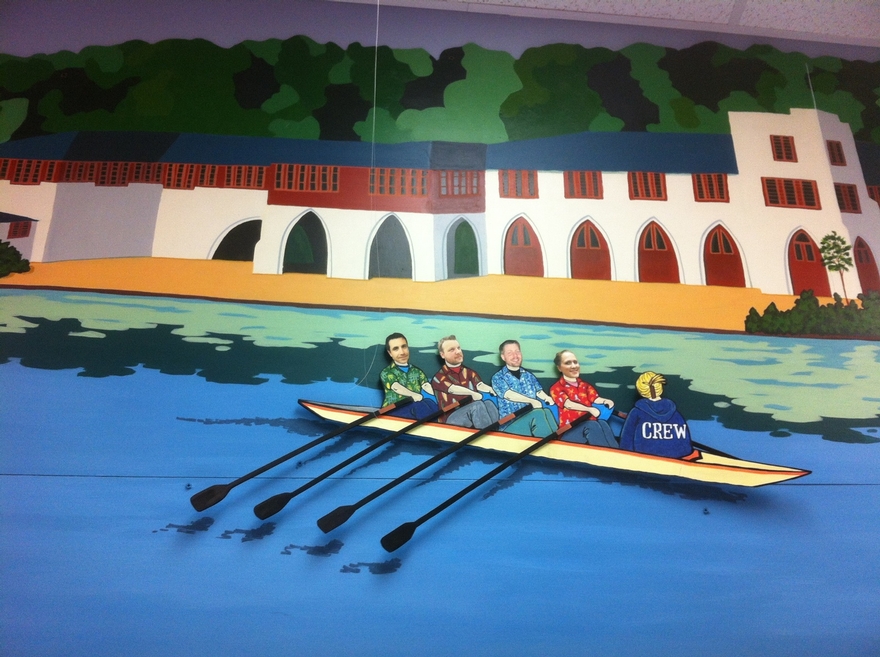
After several weeks of watching college crews race into and through almost every kind of unfortunate weather possible this spring, most of it including rough water and stiff headwinds, I felt compelled to air out an idea I have had for a couple years now.
It may seem a bit radical on the face of it, but the thing about a cockamamie idea is that you never know who will like it: cockamamie people may think it is cockamamie, and sensible people may think it is great - and of course cockamamie people may think it great and sensible people think it cockamamie. Which is all the more reason to float such an idea now and then, in this case one that I have had for some time, not least when out on the water covering racing for row2k.
To wit: at the NCAA level in particular, ditch the varsity four, and instead race a coxed quadruple scull. It sounds like an odd event, and one certainly without much precedent at the collegiate level, but the women's coxed quad was once an Olympic event (the US won it in 1984, the last time it was raced, so remains the Olympic champion in perpetuity). I am not entirely certain, but the coxed designation for the women's quad may have been an artifact of a time that perhaps women were not thought capable of steering a boat themselves (no woman driver jokes here), but even if it was, I don't think it is retrograde to resurrect the event, for some of the reasons I outline below.
In much of Europe, the UK, and down under, the coxed quad is sometimes considered the canonical learning boat; in Australia, there are even hotly contested age group champions in the event. It is also seeing a bit of a resurgence at big community and youth rowing clubs, especially in warmer climates, where lots of young people can get in coxed quads and learn the sport quickly and well.
Having attended I would bet as many college races as anyone alive in the past eighteen spring seasons, I have seen some great coxed four races, but all told, have seen many more difficult coxed four races. Given a bit of headwind, it is not unusual to have a decent DI varsity four go over eight minutes, even at the NCAA championship.
I have outlined some pros and cons that I hope provide some balance in what is really a non-existent debate at the moment, but I think would be interesting to consider. Before diving in, please note that some of the example scenarios to follow are a bit harsh by design, in order to make the point most clearly; I hope not to get into a debate over the choice of scenarios, thanks.
Pros:
-Speed closer to that of an eight, so way easier to coach, train, do pieces alongside a 2V or 3V8, etc.
- probably a lot safer than fours in iffy conditions
- The skill factor vs a coxed four is probably overstated, as a coxed four is a really hard boat to row
- With coxed quad kids don't have to learn to toe a boat on unfamiliar courses, you don't lose a coxswain's spot, and the overall team head count stays the same
- 4x can be very fun to row
- Can be more fun to watch (in my opinion)
- Normalize and promote a bit of sculling inside the biggest and most well-funded programs (no hectoring lectures forthcoming from me on this point, thanks, we have all heard them many times over)
- Just having a bunch of sculling boats around the boathouse will lead to the "better" athletes doing some sculling one way or another, closing the ability gap
- Sculling is a good "life skill" that helps keep folks in the sport as they get older and have far fewer (if any) team boat options
Cons:
- Since it is still the "third boat" in the team heirarchy, sculling could end up a specialty of "lower-boat" athletes
- Could cause decreased mobility from boat to boat within the team, and odd incentives for athletes not to be moved up or down in the overall program (a couple possible scenarios as examples here: a kid who is a solid 2V candidate meets resistance on moving up from the 4x because she is a better sculler than the other 2V8 candidates, so gets negatively rewarded for sculling well by not getting a shot at the 2V; another might be that a kid who is a 5V person at best but rowed the 1x throughout HS because she couldn't get along with anyone alive could end up in V4x due to sculling ability, and a kid with better athleticism/potential/attitude/whatever ends up being bested simply due to less specific sculling experience)
- Recruiting could become even more complicated as teams try to balance sculling skills versus athleticism
- Setting up regattas with teams that have mismatched numbers could be difficult (for example, could see Team A having a V8, 2V8, V4x, 3V8, 4V4+; and Team B having V8, 2V8, V4x, V4xB, V4+ - and having lower boat kids row a different event almost every week)
- Expense of purchasing and retrofitting current fours with sculling riggers, or purchasing two sets of riggers on a every new convertible 4+/4x, could be quite high
- Taken to extreme, might need an entire secondary fleet of fours to do seat-racing, fall racing, etc.
- Though it is likely, but there is no guarantee that a coxed quad is going to be a whole lot faster than a coxed four
The history of the four event at NCAAs is a bit of a twisting but illustrative one, as it was originally intended to give teams that did not qualify to send their eights a chance at least to send a four. Roughly it went like this: after originally having the top four athletes from a few programs race against athletes 17-20 from all the team qualifier programs, the overall field was expanded to include a four from all qualifying programs, and the championship composition of the four shifted instead to become the third boat from all programs, with no programs sending only a four.
Ever since, the presence of the four has been the topic of occasional debate, with some general expansion discussions weighing a third varsity eight versus simply adding more teams overall. When a change in the rules for football a couple years ago resulted in the expansion of the NCAA field to 24 teams selected through automatic qualifiers, the discussion of the V4 vs 3V8 quieted down a bit, but will likely return. And I do like the idea of swapping the third varsity eight for the fours, mainly because it expands the overall field, and becomes a lot easier to teach, coach, and train for programs that don't have five coaches and a placid lake to row on.
Anyway, this cockamamie idea may or may not gain any traction whatsoever, but there you go.
If you enjoy and rely on row2k, we need your help to be able to keep doing all this. Though row2k sometimes looks like a big, outside-funded operation, it mainly runs on enthusiasm and grit. Help us keep it coming, thank you! Learn more.
Comments | Log in to comment |
- Bont Rowing
- Calm Waters Rowing
- Concept 2
- Craftsbury Sculling
- The Crew Classic
- CrewLAB
- Croker
- Dad Vail Regatta
- Durham Boat Co.
- Empacher
- Faster Masters
- Filippi
- Fluidesign
- h2row.net
- HUDSON
- Live2Row Studios
- Nielsen-Kellerman
- Oak Ridge RA
- Peinert Boat Works
- Pocock Racing Shells
- Race1 USA
- Rockland Rowing Masters Regatta
- RowKraft
- Rubini Jewelers
- Vespoli USA
- WinTech Racing
- Bont Rowing
- Calm Waters Rowing
- Concept 2
- Craftsbury Sculling
- The Crew Classic
- CrewLAB
- Croker
- Dad Vail Regatta
- Durham Boat Co.
- Empacher
- Faster Masters
- Filippi
- Fluidesign
- h2row.net
- HUDSON
- Live2Row Studios
- Nielsen-Kellerman
- Oak Ridge RA
- Peinert Boat Works
- Pocock Racing Shells
- Race1 USA
- Rockland Rowing Masters Regatta
- RowKraft
- Rubini Jewelers
- Vespoli USA
- WinTech Racing






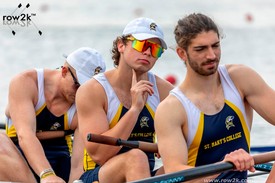
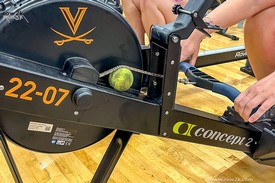
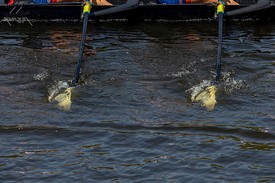

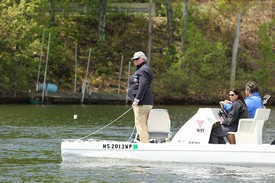






05/06/2014 7:42:29 AM
05/04/2014 2:27:03 PM
05/03/2014 10:49:50 AM
Thanks for reading and thanks for stirring up the status quo but the real cockamamie concept is having a JV event at the NCAA.
05/02/2014 3:59:51 PM
Another pro you can add to the discussion is 'keeping cox's employed'.
Nobody is a bigger advocate for sculling than I am but frankly college programs are ill suited for small boat competition in the college season. programs like Wisco and Udub have the right idea, have a summer program of small boats only, make a campaign out of it and teach the kids.
The huge positives for collegiate rowing is the numbers of participants, safety and economy in coaching of the big boats, and the result of this has been programs that have developed over the generations with enough alumni to fully support these programs.
Sculling in doubles and quads is no closer to learning to scull than rowing eights. the boats row easily enough that the kids can pound away like they do in the eights, it's something that's readily doable for college programs, but you aren't getting the benefit of learning to scull that many think you do. Yes, you're using two instead of one oar, but it's frankly easier for them to learn in those boats than switching sides, for example.
Until you campaign in a single or pair, actually do a full season of racing at a high level trying to make that small boat go, you haven't learned what you need to learn from those boats to apply to your rowing at large.
I disagree with one 'pro', I don't think the coxed quad is marginally much closer in speed to the eights to make the training sessions that much easier to do, they're actually closer in speed to the fours/w than to the eights. You'd have the same sort of coaching requirements. Add a 'con' in that fours are useful for the top two eights for seat racing, training, etc, and since you'd need more than one quad for selection, you'd end up doubling your fleet of cox 4/quad shells, or constantly re-rigging.
Also, FYI, Romania won gold in '84. US silver.
The other 'con' in there is obvious, I think the coxed quad would be much more attractive to ppl if it wasn't a legacy from a male dominated sport that harbored gross prejudices in that day. I think if it were a 'new thing' it might have a chance of flying.
all in all, not a bad idea, Ed.
05/02/2014 4:00:34 PM
05/02/2014 9:35:28 AM
05/01/2014 10:13:14 PM
05/01/2014 12:04:43 PM
05/01/2014 2:51:18 PM
05/01/2014 9:20:53 AM
Additional cost of another set of riggers is probably about $2000 guessing from the Hudson and Kaschper websites.
Scullers wanting to move from the 4x+ into the 2V8 might have the advantage of being able to row either side???